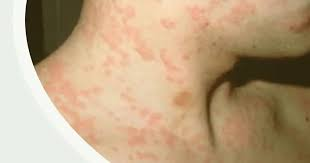A nurse is caring for a 4-year-old child following an orthopedic procedure. When assessing the child for pain, which of the following pain scales should the nurse use?
FACES
Word-graphic
Numeric
CRIES
The Correct Answer is A
A. For assessing pain in a 4-year-old child following an orthopedic procedure, the nurse should use the FACES pain scale.
The FACES pain scale uses a series of faces with varying expressions, from smiling to crying, to help children express their level of pain. Children are asked to point to the face that best matches how they feel. This scale is particularly useful for young children who may not have the verbal skills to describe their pain accurately using words or numbers.
B. Word-graphic
Explanation: The word-graphic pain scale typically uses a combination of words and drawings to assess pain, making it more suitable for children who are slightly older and can understand simple words and concepts.
C. Numeric
Explanation: The numeric pain scale involves asking the child to rate their pain on a scale from 0 to 10. This scale is more appropriate for older children who can understand and assign numerical values to their pain intensity.
D. CRIES
Explanation: The CRIES pain scale is often used for assessing pain in newborns and infants up to 6 months old. It focuses on crying, oxygen saturation, vital signs, and facial expressions.

Nursing Test Bank
Naxlex Comprehensive Predictor Exams
Related Questions
Correct Answer is ["7.5"]
Explanation
To calculate the amount of potassium chloride elixir needed per dose, we can use the following formula:
Amount per dose (mL) = (Desired dose in mEq / Concentration in mEq/mL) * Volume in mL
Given:
Desired dose = 20 mEq/day divided equally every 12 hr = 10 mEq/dose
Concentration = 6.7 mEq/5 mL
Plugging in the values:
Amount per dose (mL) = (10 mEq / 6.7 mEq/5 mL) * 5 mL
Calculating:
Amount per dose (mL) ≈ 7.46 mL
Rounded to the nearest tenth, the nurse should administer approximately 7.5 mL of the potassium chloride elixir per dose.
Correct Answer is A
Explanation
A. Pruritus, which is itching, is a common adverse effect associated with the use of opioids, including morphine. Itching can occur when opioids are administered through various routes, including epidural infusion. The exact mechanism for opioid-induced itching is not fully understood, but it is thought to be related to the release of histamines or other chemical mediators.
B. Gastric bleeding is not a common adverse effect of epidurally administered opioids like morphine. Gastric bleeding is more associated with non-steroidal anti-inflammatory drugs (NSAIDs) and certain other medications.
C & D. Tachypnea (rapid breathing) and cough are not typical adverse effects of epidurally administered opioids. However, opioids can cause respiratory depression (slow and shallow breathing), so monitoring respiratory status is important when using these medications.

Whether you are a student looking to ace your exams or a practicing nurse seeking to enhance your expertise , our nursing education contents will empower you with the confidence and competence to make a difference in the lives of patients and become a respected leader in the healthcare field.
Visit Naxlex, invest in your future and unlock endless possibilities with our unparalleled nursing education contents today
Report Wrong Answer on the Current Question
Do you disagree with the answer? If yes, what is your expected answer? Explain.
Kindly be descriptive with the issue you are facing.
